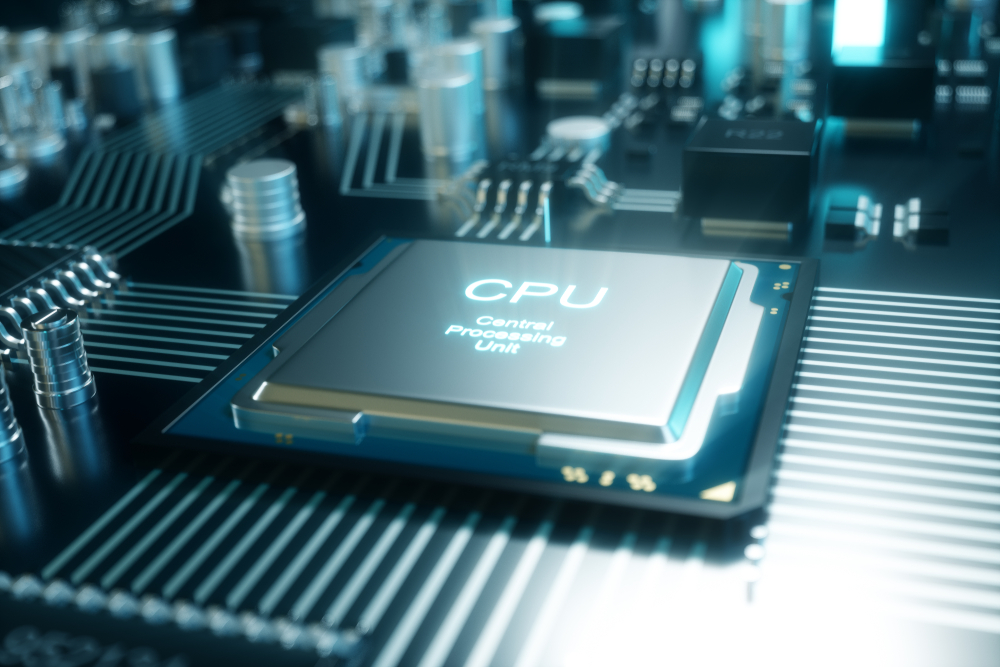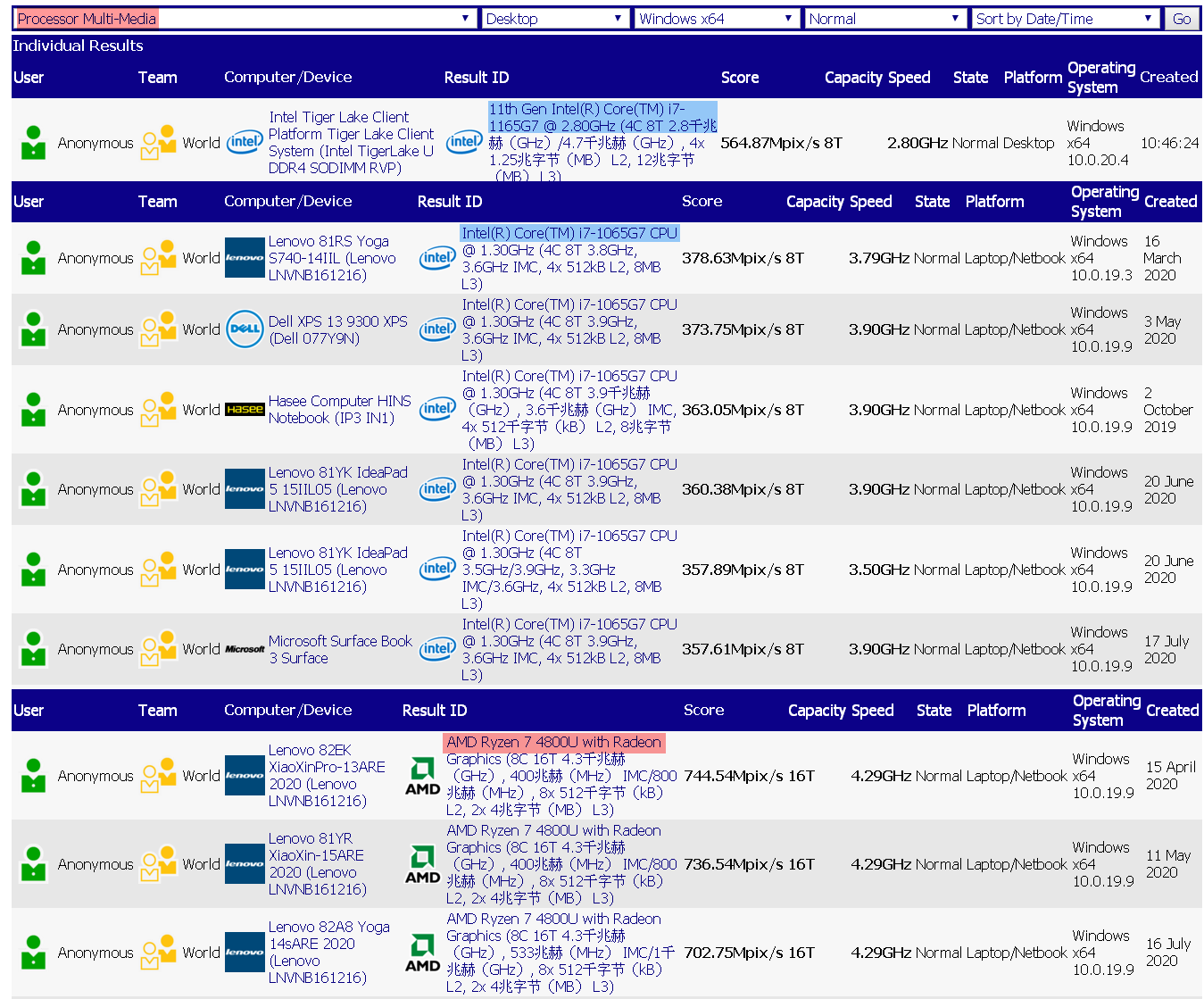Intel 11th Gen Tiger Lake CPU Obliterates Ice Lake Chip

Intel is getting ready to release Tiger Lake from its cage; however, the rowdy Core i7-1165G7 has already started flaunting its prowess in a SiSoftware benchmark.
Being a member of the 11th Generation Tiger Lake family means that the Core i7-1165G7 packs Intel's Willow Cove microarchitecture and Gen12 Xe graphics. The quad-core, eight-thread processor reportedly checks in with a 2.8 GHz base clock and 4.7 GHz boost clock. It's been known for a long time now that Tiger Lake will usher in 50% higher L3 cache per core in comparison to Ice Lake. The change is the SiSoftware benchmark spotted by @TUM_APISAK: The Core i7-1165G7 has 12MB of L3 cache compared to the 8MB of L3 cache on the existing Core i7-1065G7 Ice Lake processor.
On the graphics end, Gen12 is expected to arrive with 50% more execution units (EUs) in relation to Gen11. As a recap, Gen11 is limited to 64 EUs, meaning that Gen12 houses up to 96 EUs or 768 shading units. The exact configuration inside the Core i7-1165G7 is unknown. Nonetheless, the Core i7-1165G7 did seemingly beat AMD's Ryzen 9 4900HS and Ryzen 7 4800U (codename Renoir) on 3DMark Time Spy not so long ago. That's only one benchmark though; it remains to be seen whether Gen12 can really dominate Vega in real-world gaming.
| Processor | Cores / Threads | Base / Boost Clock (GHz) | L3 Cache (MB) | TDP (W) |
|---|---|---|---|---|
| Ryzen 7 4800U | 8 / 16 | 1.8 / 4.2 | 8 | 15 |
| Core i7-1165G7* | 4 / 8 | 2.8 / 4.7 | 12 | ? |
| Core i7-1065G7 | 4 / 8 | 1.3 / 3.9 | 8 | 15 |
*Specifications are unconfirmed.
The Core i7-1065G7 processor reached a score of 378.63 Mpix/s on the processor multimedia test. With a score of 564.87 Mpix/s, the Core i7-1165G7 is up to 49.2% faster than the Ice Lake chip. As impressive as the Core i7-1165G7 looks, the quad-core Tiger lake processor is no match for the Ryzen 7 4800U.
The Ryzen 7 4800U is another example of AMD's proven combination of the Zen 2 microarchitecture and TSMC's 7nm FinFET node. It's hard for Intel to compete when the Ryzen 7 4800U brings eight cores and 16 threads to the table. The design helps push the Renoir APU ahead of the Tiger Lake part by up to 31.8%. Some might argue that the margin is underwhelming when you consider the fact that the Ryzen 7 4800U has double the number of CPU cores as the Core i7-1065G7.
Tiger Lake will introduce substantial changes, such as the move to the 10nm+ node, Thunderbolt 4 support, adoption of the Willow Cove microarchitecture, Gen12 Xe graphics and among others. Early rumors even suggested support for the PCIe 4.0 interface.
Get Tom's Hardware's best news and in-depth reviews, straight to your inbox.
Intel has scheduled a virtual event for the press on September 2. The chipmaker didn't share the program, but we expect announcements on Tiger Lake and, perhaps, the Xe Graphics DG1, Intel's forthcoming discrete mobile GPU.

Zhiye Liu is a news editor, memory reviewer, and SSD tester at Tom’s Hardware. Although he loves everything that’s hardware, he has a soft spot for CPUs, GPUs, and RAM.
-
gg83 So that much L3 cache makes up for the lower core count? Or is it a combination of the new architecture plus extra cache? I always wondered why they don't use a "ton" of cacheReply -
JayNor Any sightings yet of a Tiger Lake-H 8 core part? I saw it described on wccftech, but haven't seen benchmark leaks as we see for the Tiger Lake-U parts.Reply -
JayNor One of the wccftech articles on Tiger Lake-H includes this statement:Reply
"Tiger Lake-H CPUs would additionally feature Two-Level Memory (2LM) and SGX (Software Guard Extensions)."
I understand the 2LM feature to be part of the support required for Optane DIMMs. Has anyone seen explicit mention of Optane DIMM support for Tiger Lake-H? That would be an interesting feature for a low power desktop chip. -
thisisaname Nice processor shame they are not in a position to product many of them this year.Reply -
bit_user ReplyThe design helps push the Renoir APU ahead of the Tiger Lake part by up to 31.8%. Some might argue that the margin is underwhelming when you consider the fact that the Ryzen 7 4800U has double the number of CPU cores as the Core i7-1065G7.
We don't know how linearly that benchmark scales.
More importantly, consider that the 4800U is also constrained by a 15 W envelope, which is why its base clock is so much lower.
In fact, if you multiply the cores by the base clock, the 4800U has 14.4 core GHz and the i7-1165G7 comes in at 11.2. Divide those and you get only a 28.6% advantage for the 4800U. So, if anything the 4800U seems to perform better than expected! Since it's probably not accomplishing that through superior IPC, I'd assume it's still managing to run above its base clocks, even with all cores/threads cranking. -
bit_user Reply
Cache costs money (via more die area) and burns power. The performance benefits it confers tend to be logarithmic, although there are certain to be discontinuities for some workloads.gg83 said:I always wondered why they don't use a "ton" of cache
Adding cache is a reliable but somewhat costly way to gin up performance by a couple %. -
yeeeeman 1185G7 will be the competitor for 4800u. 1165G7 should fight with 4700U and it actually matches its performance.Reply -
InvalidError Unless Intel's PCIe4 interface is a whole lot more power-efficient than AMD's, I doubt PCIe4 would be missed much on mobile platforms between the increased battery drain and thermal management challenges.Reply -
PCWarrior Geekbench 5 results:Here is Tigerlake i7 1165G7 in Acer Swift SF314: It does ST:1486, MT: 5827Reply
Here is a Ryzen 7 4700U in Acer Swift SF314: It does ST:1068, MT: 4637
So basically Tigerlake is running circles around Renoir: 39.1% higher single threaded performance and 25.6% higher multi-threaded performance (even with half the physical cores – yes with HT vs without SMT but it is still like comparing a 5.5c5.5t vs a 8c/8t and the former winning by 25%)
